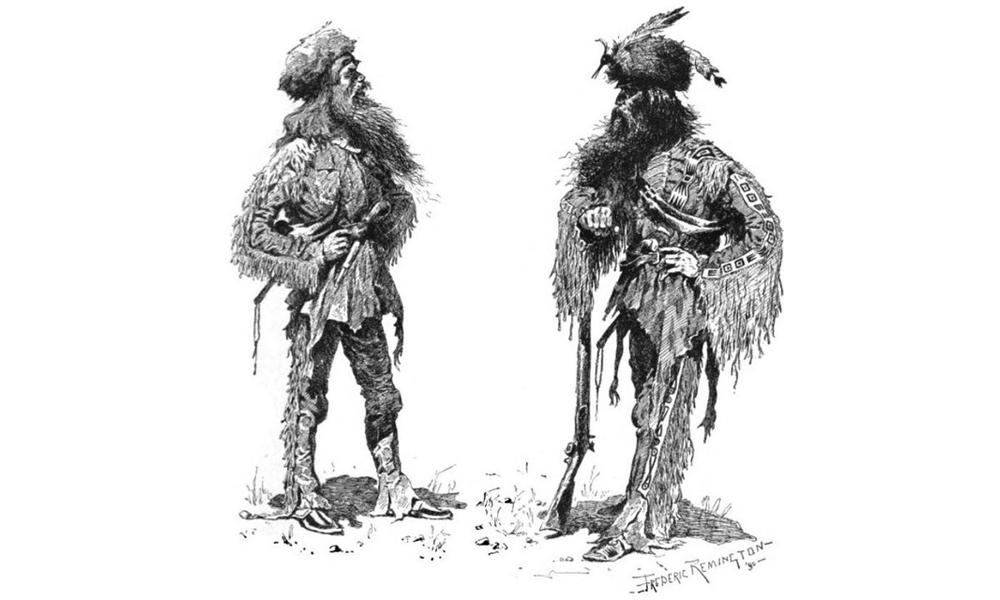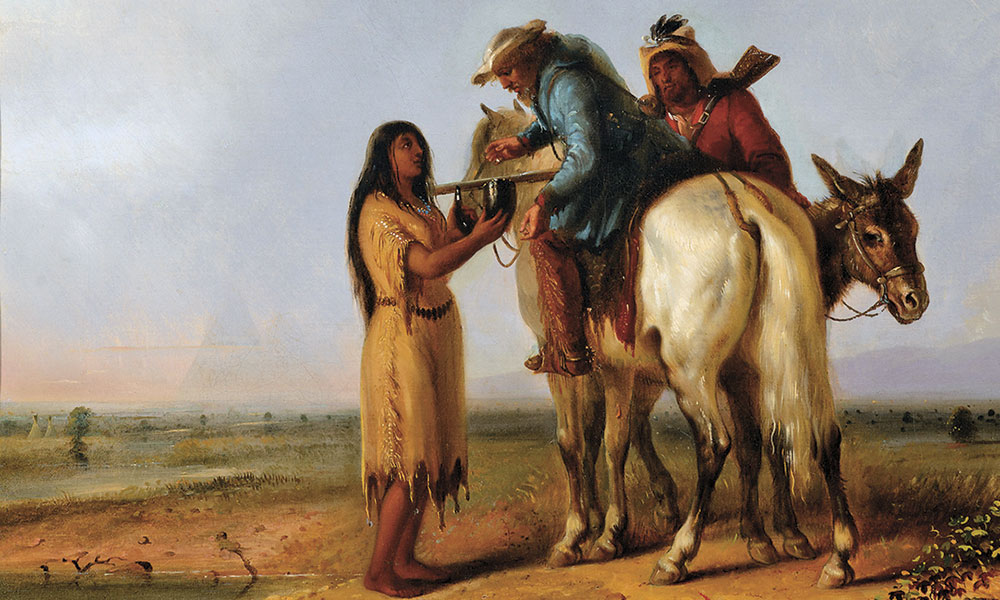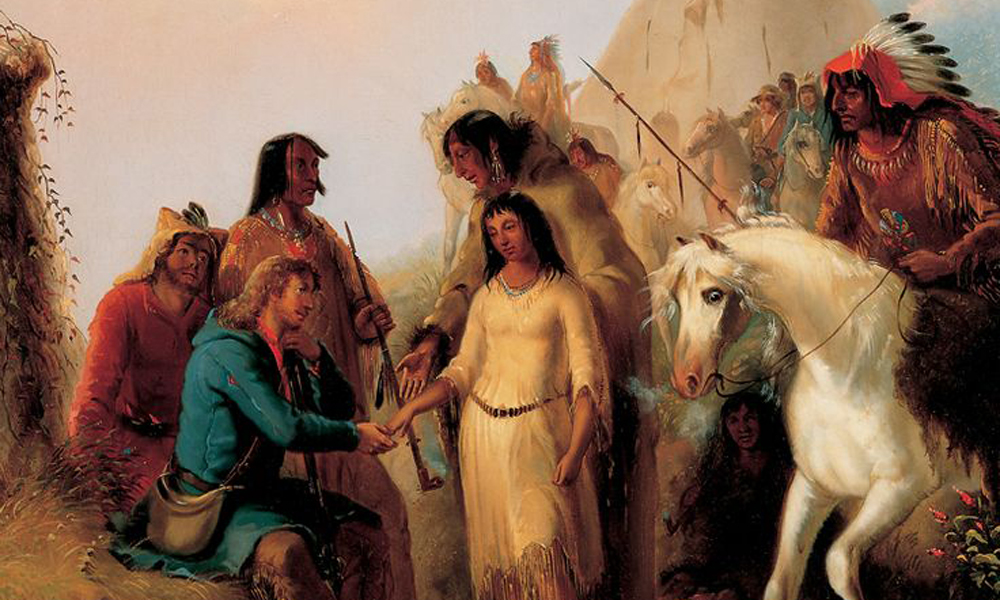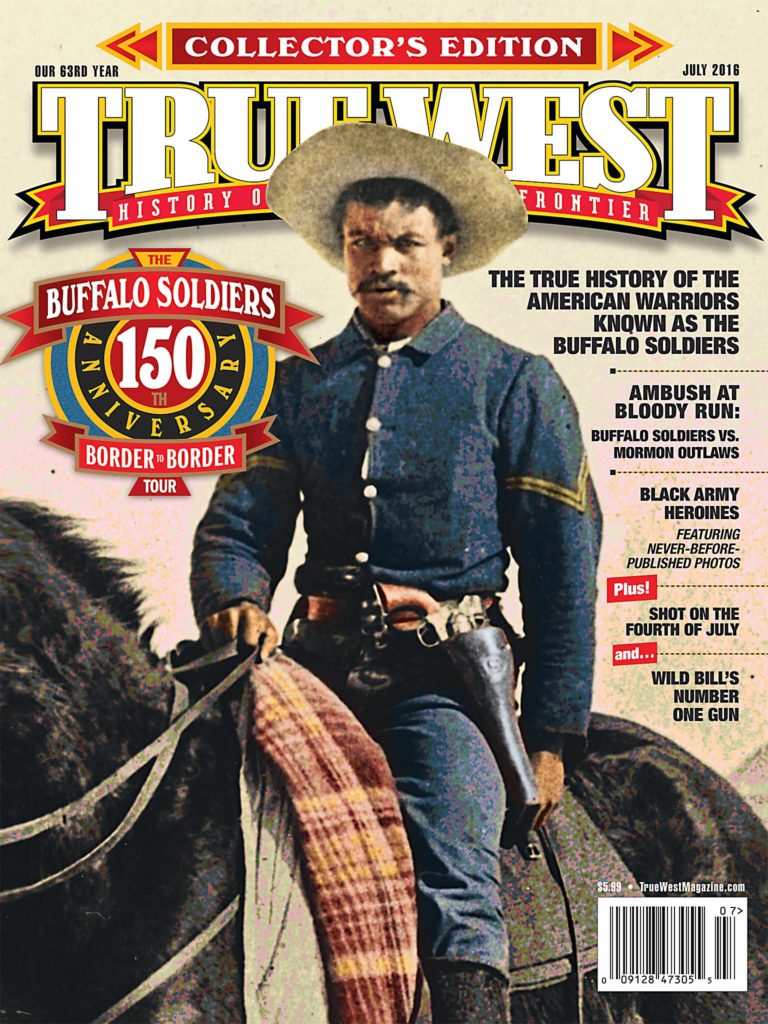
The trapper’s clothes were homemade and usually made from durable buckskin. During meals he rubbed his greasy hands over his leathers, something in time served to make his outfit waterproof. He also attached a fringe along the seams. This not only looked fancy but more importantly, it caused the water to run off rather than soak in during wet weather. In hostile Indian country some designed a coat of mail-like protection by hardening the leather of a buckskin shirt, thus increasing chances of survival in case of attack.
Kit Carson once told of an experience suffered in his younger days when, traveling to Bent’s Fort on the Arkansas River, he chanced to run into a rainstorm. He found shelter in an abandoned Indian tepee where he spent the night. The next morning he noticed a terrible itch. Riding on to the fort, he explained his dilemma to William Bent, who told him to remove his clothes. Bent took the clothes and deposited them on the nearest anthill, where, in no time at all the lice were devoured. After a thorough scrubbing in some solution concocted by Bent, Carson was pronounced fit; a much wiser young man for his experience.
The elements weathered by fur trappers!






